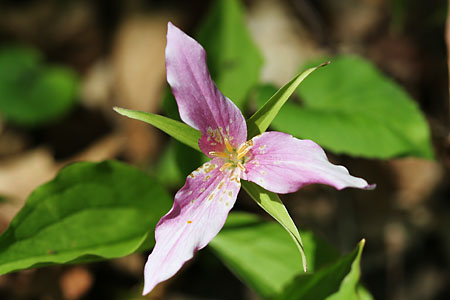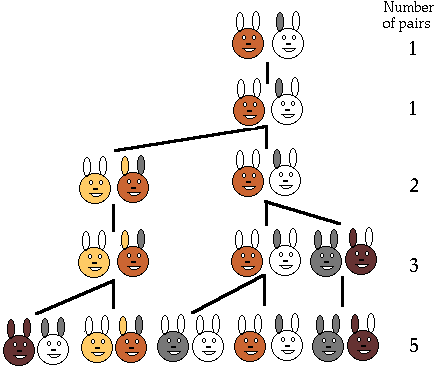


At this point you may wonder what the Fibonacci series has to do with real life. Well, for one, the number of petals in a flower is usually a Fibonacci number.
As you may recall, the Fibonacci series is 0, 1, 1, 2, 3, 5, 8 and so on. Consider the flowers presented below:

|
This flower is called a pink trillium. It has 3 petals, which is the 5th term of the Fibonacci series. |

|
This flower is called a larkspur. It has 5 petals, which is the 6th term of the Fibonacci series. |

|
This flower is called a pink clematis. It has 8 petals, which is the 7th term of the Fibonacci series. |
For more information on this subject, please go to my page on flowers.
The Fibonacci series can be applied to animals as well.
Let us say that we have one pair of rabbits, one male and one female. These rabbits reproduce according to the following rules:
We will start on month 1 here representing first term.

|
|
Let us see another similar example.
Henry E. Dudeney was an English puzzlist who lived between 1857 and 1930. He wrote many interesting books including 536 Puzzles and Curious Problems. On his 175th problem he wrote another way of relating the Fibonacci numbers to nature.
Suppose that there is one female cow and an unlimited amount of males to breed with. Like in the rabbit problem above,
According to these rules: